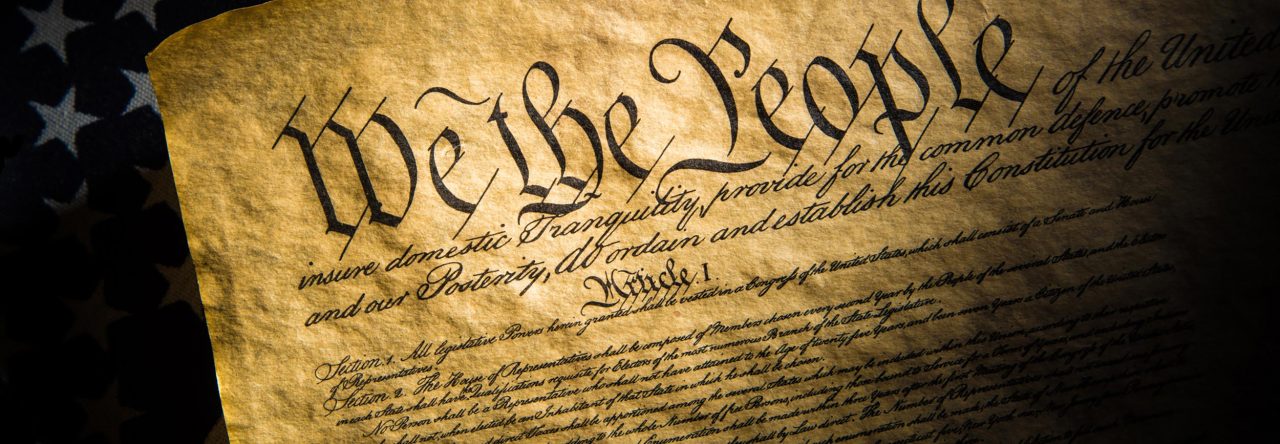The Coming Assault on Red States
How Democratic policies would punish the South and Southwest.
by the Editorial Board
Wall Street Journal November 1, 2020
‘I don’t see red states and blue states,” said Joe Biden in the final presidential debate, borrowing a line from Barack Obama. He must not have examined the policies that he and Democrats in Congress are pushing that would do disproportional harm to Republican states, especially in the South, while favoring Democratic states. Let’s examine four policies in particular:
• A $15 national minimum wage. Mr. Biden supports it and House Democrats last year voted to raise the federal minimum in $1.10 annual increments to $15 per hour in 2027 from the existing $7.25 floor.
Mr. Biden says a federal $15 minimum won’t harm small businesses. But the labor market isn’t national. It varies by state and region based on the dominant industries, labor supply and cost of living. The Labor Department says 21 states plus Puerto Rico had a $7.25 minimum wage as of Sept. 1. Ten of those are Southern states with lower per capita incomes than the Northeast or West Coast.
Their small businesses would be hurt far more than New York ($11.80 minimum wage) and California ($12), where the state minimum is already headed to $15. Seven blue states and 28 cities have imposed a minimum of $15 or higher that will kick in over the next seven years.
A new study from the Employment Policies Institute (EPI) estimates the House legislation would result in two million job losses across the U.S. Fewer than 10% of the losses would be in states with a Democratic governor and legislature. Layoffs would be especially heavy in Texas (370,664), Pennsylvania (143,402), Florida (133,328), North Carolina (121,581), Ohio (108,312) and Georgia (106,427). They’d also be high in 16 other states where the minimum wage isn’t set to rise above the current federal floor.
Labor makes up a smaller share of business operating costs in blue states because rents and utility bills are higher. Businesses in wealthier areas also have more flexibility to raise prices to offset higher labor costs. Most workers on the job for more than a few months earn more than the minimum wage, and a higher minimum discourages businesses from hiring less-experienced workers—or those with criminal backgrounds.
The EPI study estimates that about 60% of job losses from a $15 federal minimum wage would occur among workers between the ages of 16 and 24. No matter. Liberals want to equalize hiring burdens nationwide so Democratic states aren’t less economically competitive.
• Banning right to work nationwide. That’s also the logic behind the plan to abolish right-to-work laws in the 27 states that prohibit employers from requiring workers to join unions. Most right-to-work states are in the South and West, though West Virginia, Wisconsin and Michigan joined the club more recently.
Right-to-work states have added more jobs and population this past decade, though they also tend to impose lower taxes and other burdens. Boeing announced a few weeks ago it would consolidate its 787 Dreamliner assembly in right-to-work South Carolina after shifting some production there a decade or so ago from Washington state to avoid strikes by its machinist union.
States have been able to pass right-to-work laws since Congress passed the Taft-Hartley Act in 1947. Democrats want to repeal that right to help unions in non-right-to-work states.
• Restoring the state and local tax deduction. The pandemic is accelerating the flight of businesses and high-earners from blue states. By capping the SALT deduction at $10,000, the 2017 tax reform exposed the well-to-do to the full pain of high taxes in blue states. Democrats want to restore the full state-and-local tax (SALT) deduction, albeit with much higher federal tax rates.
In 2017 California, New York and New Jersey accounted for 40% of SALT deducted, according to IRS data, with only 20% of the country’s population. Texas, Florida, Arizona, South Carolina and Montana accounted for about 20% of the U.S. population and a mere 10% of the SALT deducted. Red states tend to have much lower income and property taxes.
• Another bailout for state politicians. House Democrats passed the Heroes Act in May that provides $915 billion to state and local governments. Senate Republicans oppose this blowout after the $150 billion in direct aid plus $90 billion for schools, public transit and Medicaid that flowed to state and local governments under the Cares Act in March.
Democrats will certainly pass another bailout in 2021 if they win the election. This will amount in effect to a red-state subsidy for public-union governance in states like California, Illinois and New York. The Heroes Act would also help blue states by raising the federal Medicaid match by 14 percentage points, and overall bailout funds are mostly allocated based on state population and unemployment.
Democratic states that stayed locked down longer and have higher unemployment have drawn more federal aid. According to our calculations based on Bureau of Economic Analysis data, annualized per capita government transfer receipts in the second quarter after the Cares Act passed were significantly higher in New Jersey ($14,033), Illinois ($9,223), New York ($9,030), California ($8,673), Washington ($8,511) and Oregon ($8,258) than Texas ($6,450), Indiana ($6,085), Tennessee ($5,430), Florida ($5,399), Georgia ($5,353) and Arizona ($5,326).
Mr. Biden is right when he says the government shouldn’t pit states against one another. But he ignores that the national policies Democrats are pushing have the effect of systemically discriminating against red states.


Leave a Reply